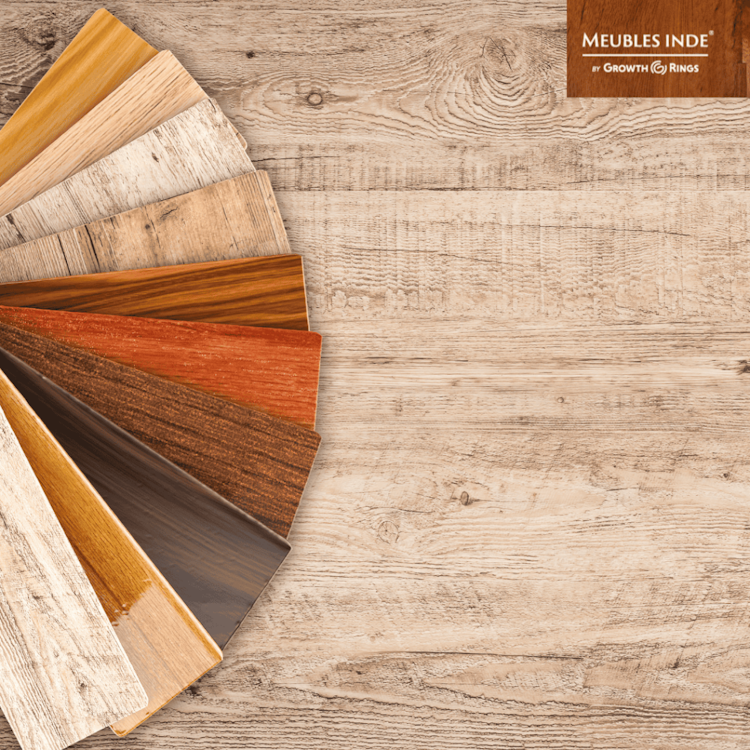Your mango wood dining table is not just a piece of furniture; it’s a natural work of art that brings warmth and character to your dining space.
To keep it looking its best, regular cleaning is essential. In this guide, we’ll walk you through the simple steps to clean your mango wood dining table and maintain its natural beauty.
Clean Your Mango Wood Dining Table in Easy Steps
Get Your Cleaning Supplies
Before diving into the cleaning process, gather the essentials. Here’s what you’ll need:
- Soft Cloth: Opt for a soft, lint-free cloth. This will help prevent scratches and damage to the wood surface.
- Mild Soap: Choose a mild, gentle soap. Avoid harsh chemicals that can strip the wood of its natural oils.
- White Vinegar: White vinegar is a natural disinfectant and can help remove stains or odors from your mango wood table.
- Warm Water: Lukewarm water is perfect for cleaning without causing any harm to the wood.
Cleaning Steps
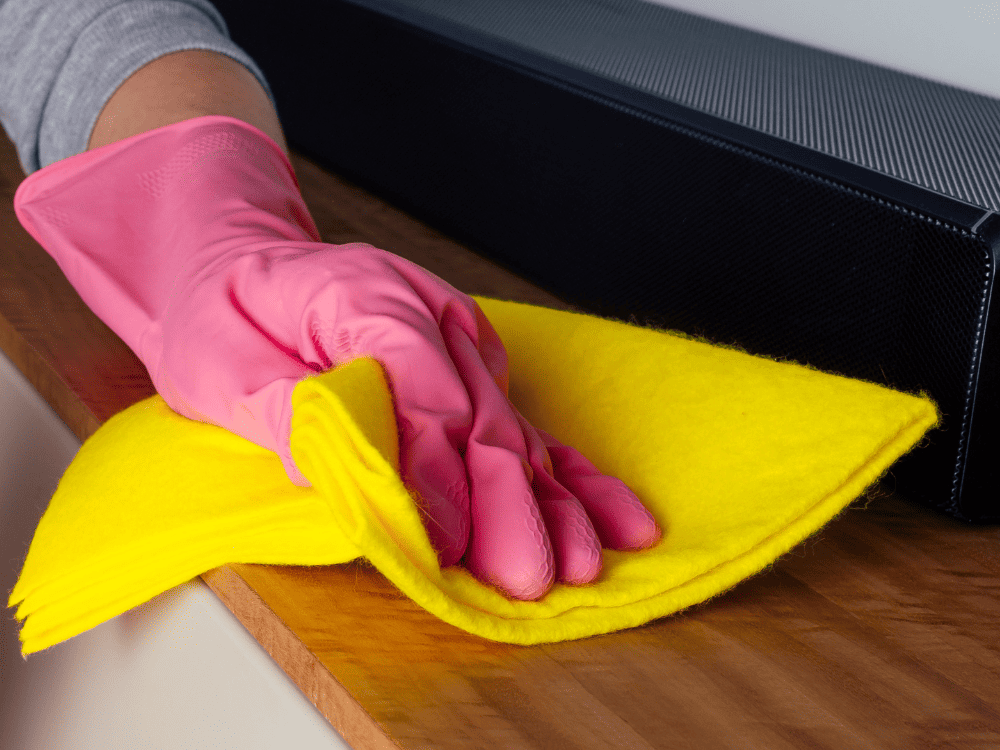
Now that you have your cleaning supplies ready, let’s go through the steps to clean your mango wood dining table:
Step 1: Dusting
Start by gently dusting the table with a soft cloth. This helps remove any loose particles that could scratch the surface during the cleaning process.
Step 2: Soap and Water Mixture
Mix a small amount of mild soap with warm water to create a soapy solution. Dip the soft cloth into the soapy water, wring it out, and gently wipe the entire surface of the table. This helps remove dirt and grime.
Step 3: White Vinegar Solution
For stubborn stains or to disinfect the surface, create a solution of white vinegar and water. Use a separate cloth to apply this solution to the stained area, and gently rub in a circular motion.
Step 4: Wipe and Dry
After cleaning, use a clean, dry cloth to wipe the table dry. Make sure there is no excess moisture left on the surface, as this can potentially damage the wood over time.
Step 5: Regular Maintenance
To keep your mango wood dining table in top condition, consider these tips:
- Avoid Harsh Chemicals: Steer clear of harsh cleaning chemicals, as they can damage the wood’s natural finish.
- Protect from Heat and Sunlight: Position your table away from direct sunlight and heat sources to prevent fading or warping.
- Use Coasters and Placemats: Place coasters under hot or wet items to protect the surface from potential damage.
By following these simple steps and incorporating regular maintenance, you can ensure that your mango wood dining table remains a stunning centerpiece in your home for years to come.
Well, as we are experts in mango wood furniture, if you would like to buy a new one then you can get it by visiting our diverse furniture category.
Want to Know in Details? Follow The Below Process
Make a Soapy Mix
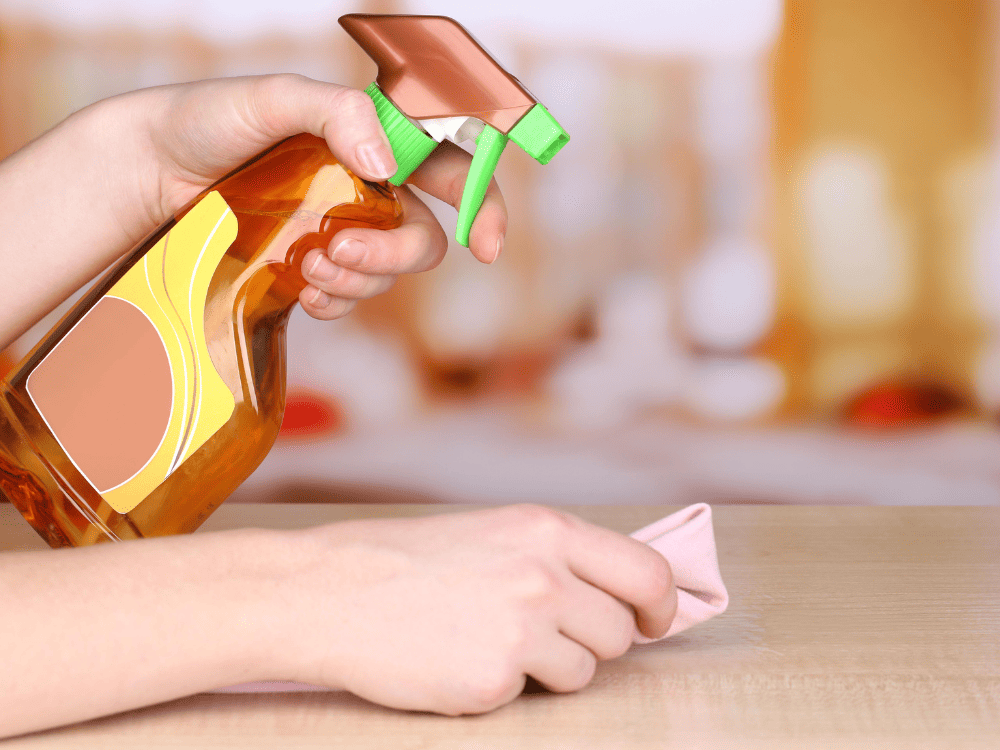
To kick off the cleaning process, let’s create a gentle and effective soapy mix. Follow these simple steps:
- Ingredients: Gather your supplies – one tablespoon of mild soap and two cups of warm water.
- Mixing: In a bowl, combine the mild soap with the warm water. Stir the mixture well until the soap dissolves, creating a soapy solution.
Clean the Table
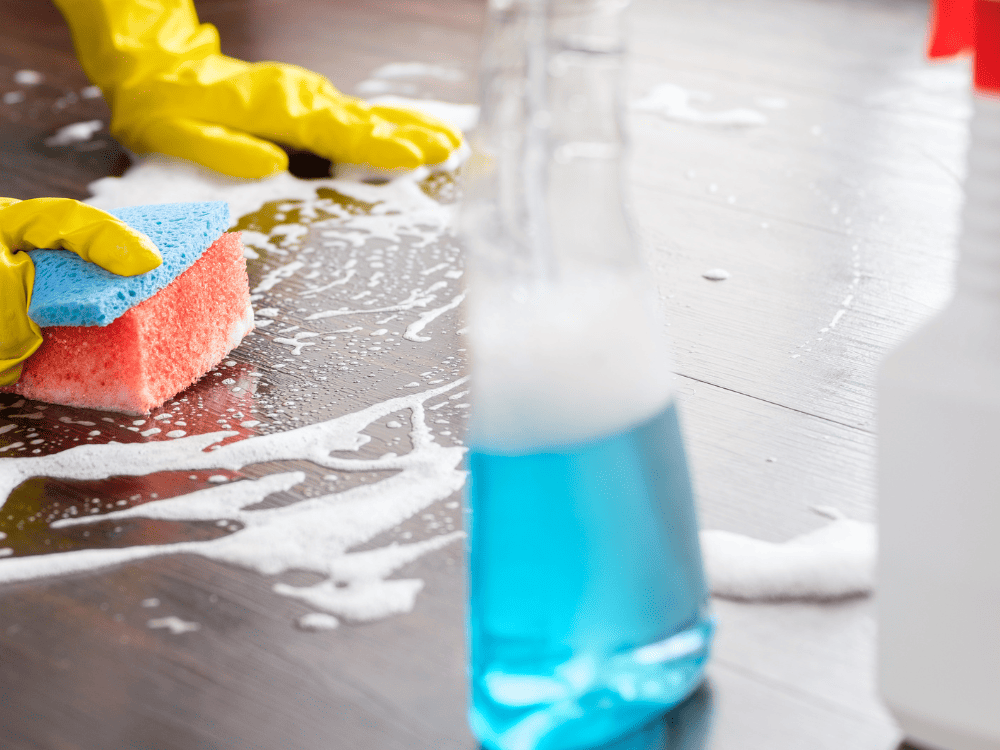
Now that you have your soapy mix ready, let’s get down to cleaning your mango wood dining table. Follow these steps:
- Dipping the Cloth: Take a soft cloth and dip it into the soapy mix. Make sure to wring out any excess liquid to avoid over-saturation.
- Wiping the Table: Gently wipe the entire surface of the table with the soapy cloth. Pay attention to corners and any intricate details. This step helps remove accumulated dirt and maintains the table’s natural shine.
Rinse and Dry
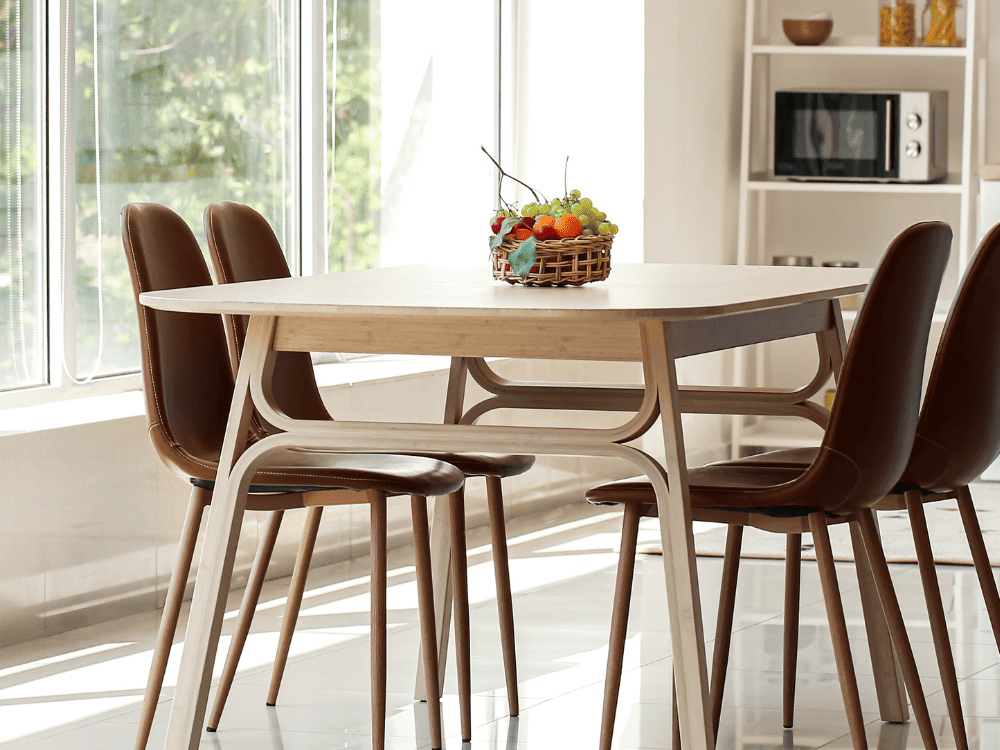
After thoroughly cleaning the table, it’s time to rinse and ensure a proper drying process. Here’s what to do:
- Damp Cloth: Take a separate cloth and dampen it with water. This will be used to remove any soap residue from the table.
- Wiping Down: Wipe down the table with the damp cloth, ensuring that all soap is removed. This step helps prevent any sticky residue from building up.
- Drying: Once you’ve removed the soap, take a dry, soft cloth and thoroughly dry the table. Ensure that there’s no lingering moisture to maintain the integrity of the wood.
Regular Maintenance Tips
To keep your mango wood dining table looking its best, consider incorporating these simple maintenance tips:
- Mindful Cleaning: Stick to mild soaps and gentle cleaning methods to preserve the natural beauty of the wood.
- Avoid Excess Moisture: Always dry the table thoroughly after cleaning to prevent any potential damage from excess moisture.
- Routine Dusting: Regularly dust your table with a soft cloth to prevent the accumulation of debris.
- Protect from Elements: Position your table away from direct sunlight, heat sources, and extreme humidity to prevent damage over time.
By following these easy steps and incorporating regular maintenance, you can ensure that your mango wood dining table remains a stunning and functional centerpiece in your home.
Deal with Tough Stains
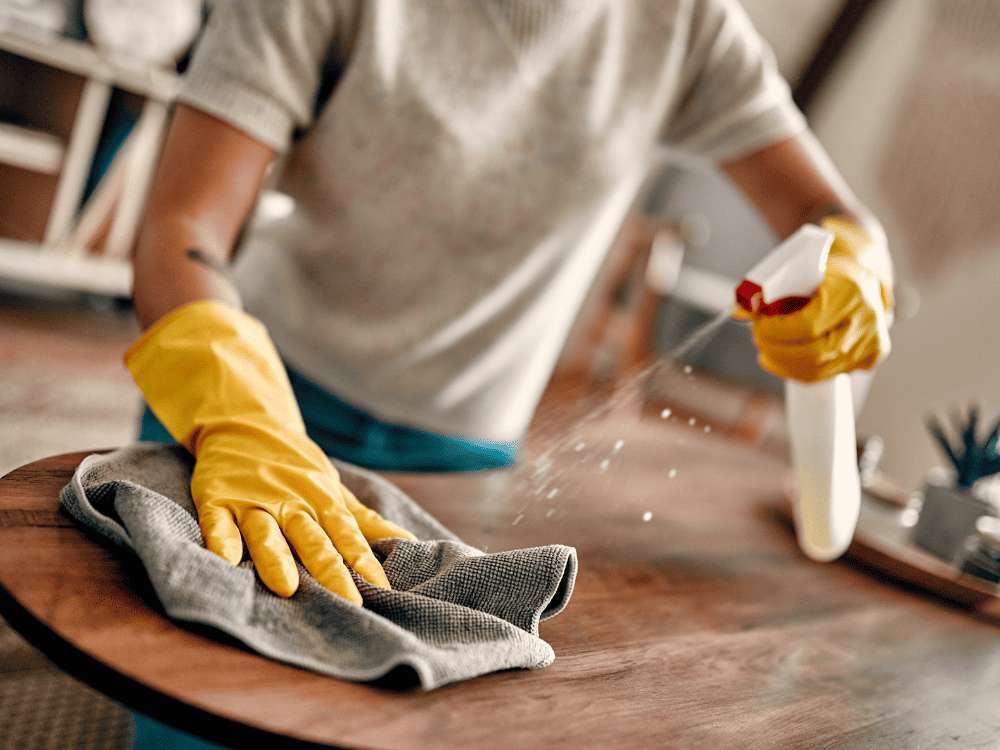
Encountered stubborn stains on your mango wood dining table? No worries, follow these steps to tackle them effectively:
- Prepare the Solution: Mix equal parts vinegar and warm water in a bowl to create a stain-fighting solution.
- Scrub Gently: Dip a soft cloth or sponge into the vinegar and water mixture. Gently scrub the stubborn stains on your table, applying light pressure.
- Rinse and Dry: Once the stains are lifted, use a damp cloth to rinse the area and then dry it thoroughly with a soft, dry cloth. This helps prevent any lingering vinegar smell and ensures the table is ready for use.
Protect Your Mango Wood Table
To prolong the life and beauty of your mango wood dining table, take these protective measures:
- Avoid Direct Sunlight: Keep your table away from direct sunlight. Prolonged exposure can lead to fading and affect the color of the wood.
- Protect from Water and Moisture: Mango wood is sensitive to water and moisture. Avoid placing wet or hot items directly on the table, as this can lead to damage and discoloration.
Use Curtains or Shades for Sun Protection
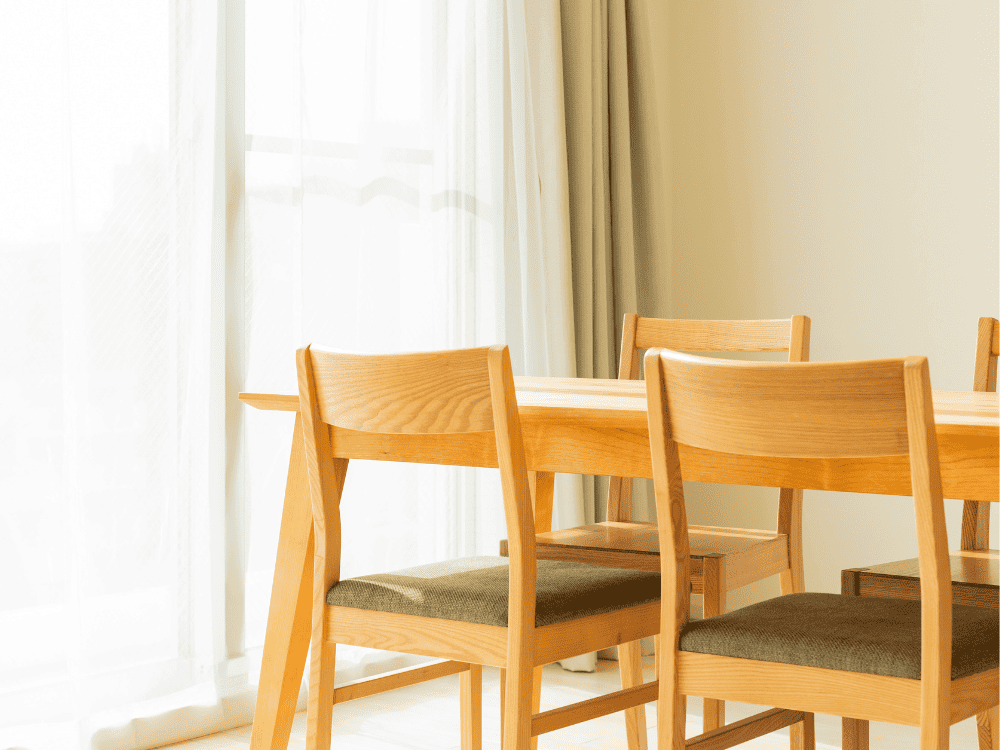
Minimize the impact of direct sunlight on your mango wood table by incorporating curtains or shades into your dining room décor. This simple addition helps preserve the rich color and finish of the wood.
Guard Against Spills
Act swiftly to protect your mango wood dining table from potential damage caused by spills:
- Wipe Up Quickly: In the event of spills, promptly wipe up the liquid with a clean, dry cloth. This prevents the wood from absorbing moisture and reduces the risk of stains.
- Use Coasters: Place coasters under glasses and cups to prevent water rings and protect the table surface.
By implementing these protective measures and dealing with stains promptly, you can ensure that your mango wood dining table remains a stunning and resilient centerpiece in your home.
Does Mango Wood Need Oil?
Maintaining the natural luster of your mango wood dining table may sometimes involve considering the use of oil. Here’s what you need to know:
- Consider Using a Sealant: While mango wood generally doesn’t require frequent oiling, you may consider using a sealant or protective coating occasionally. This helps enhance the wood’s natural beauty and provides an additional layer of protection.
Factors for Oil Use
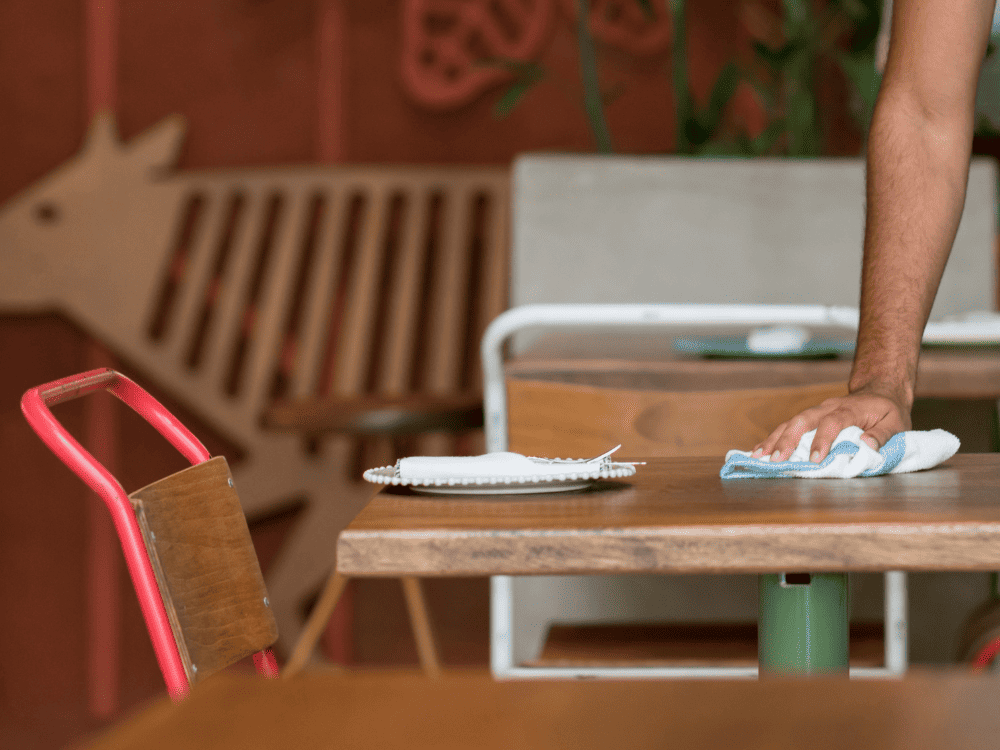
Before deciding to use oil on your mango wood table, take these factors into account:
- Exposure to Water: If your dining table is regularly exposed to water or high humidity, applying oil can help maintain the wood’s integrity and prevent damage.
- Sunlight Exposure: Tables situated in areas with direct sunlight may benefit from occasional oiling. This helps preserve the color and finish, preventing fading or discoloration.
- Contact with Food: If your dining table comes into frequent contact with food and spills, using oil can create a protective barrier, making it easier to clean and preventing stains.
Restore Your Mango Wood Table
If your mango wood dining table has seen better days, consider restoring its beauty with these steps:
- Clean: Begin by cleaning the table thoroughly, removing any dust or debris. Use a soft cloth or sponge and a mild soap solution for this step.
- Dry: Ensure the table is completely dry before proceeding to the next steps. Moisture can interfere with the effectiveness of treatments or finishes.
- Sand: Gently sand the surface of the table to remove any imperfections or minor scratches. Use a fine-grit sandpaper for this step.
- Apply Treatments or Finishes: Once the table is clean and sanded, you can apply treatments or finishes as needed. Follow product instructions carefully, whether you’re using oil, wax, or another type of finish.
By carefully considering the need for oil, understanding the influencing factors, and following the restoration process, you can revive the natural allure of your mango wood dining table.
Prepare the Surface
Before delving into any restoration work, it’s crucial to prepare the surface of your mango wood dining table. Here’s a simple guide:
- Clean the Table: Begin by ensuring that the table is clean and free from dust or debris. Use a soft cloth or sponge and a mild soap solution to wipe down the surface. This step provides a clean canvas for any restoration efforts.
- Inspect for Damage: Take a close look at the table’s surface to identify any scratches, dents, or imperfections. This inspection helps you prioritize areas that may require extra attention during the restoration process.
- Address Minor Issues: For minor scratches or blemishes, consider using a fine-grit sandpaper to gently smooth out the surface. Wipe away any sanding residue with a clean, dry cloth.
Why Choose Mango Wood for Tables?
Understanding the appeal of mango wood is essential in appreciating and caring for your dining table. Here’s why mango wood makes an excellent choice:
- Attractive Aesthetics: Mango wood boasts a natural beauty with unique grain patterns and warm hues. Its visual appeal adds a touch of elegance to any dining space.
- Durability: Recognized for its durability, mango wood stands up well to daily use. It’s resilient to wear and tear, making it a practical choice for furniture.
- Unique Character: Each piece of mango wood carries its own distinct character, showcasing variations in grain, color, and texture. This uniqueness adds a personalized touch to your dining table.
Strengths and Considerations
Before diving into restoration or purchasing decisions, consider these factors related to mango wood tables:
- Strength: Mango wood is known for its strength, providing a sturdy and long-lasting foundation for your dining table.
- Weight: While sturdy, mango wood is relatively lightweight compared to some other hardwoods. This characteristic makes it easy to move and rearrange furniture.
- Cost: Mango wood offers an attractive balance between affordability and quality. It provides a cost-effective option without compromising on aesthetics or durability.
- Finish Options: Mango wood allows for various finish options, from natural and rustic to polished and refined. Consider the finish that complements your aesthetic preferences.
By understanding the importance of surface preparation, appreciating the virtues of mango wood, and considering key factors, you can make informed decisions regarding the care and maintenance of your dining table.
Use Polish on Mango Wood
Enhance the beauty and protection of your mango wood dining table by incorporating a quality polish. Follow these steps for optimal results:
- Choose the Right Polish: Select a polish specifically designed for use on wooden surfaces. Ensure that the polish is suitable for mango wood and doesn’t contain harsh chemicals that could potentially harm the wood.
- Application: Apply a small amount of polish to a soft, lint-free cloth. Gently rub the polish onto the surface of your mango wood dining table, following the grain of the wood. This helps protect the wood and enhance its natural luster.
- Buffing: After applying the polish, use a clean, dry cloth to buff the surface of the table. This step not only removes any excess polish but also adds a final touch of shine to your dining table.
- Frequency: Depending on usage and environmental factors, consider applying polish every few months or as needed. Regular polishing helps maintain the wood’s integrity and keeps it looking its best.
Conclusion
In conclusion, caring for your mango wood dining table involves a combination of cleaning, protection, and occasional restoration. From dealing with tough stains to understanding the unique characteristics of mango wood, each step contributes to preserving the natural beauty of your table.
Remember, a well-maintained dining table not only enhances your living space but also becomes a cherished centerpiece for family gatherings and memorable meals. Invest in the longevity of your furniture and enjoy the timeless appeal of mango wood.
Discover the perfect polish for your mango wood dining table at Meubles Inde. Shop now and give your furniture the care it deserves!



